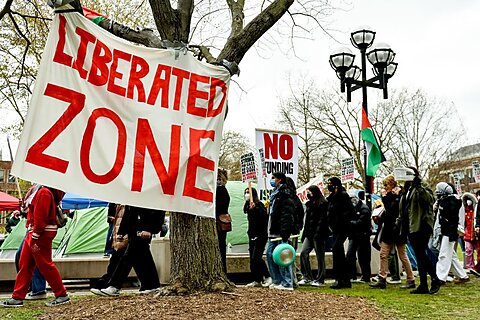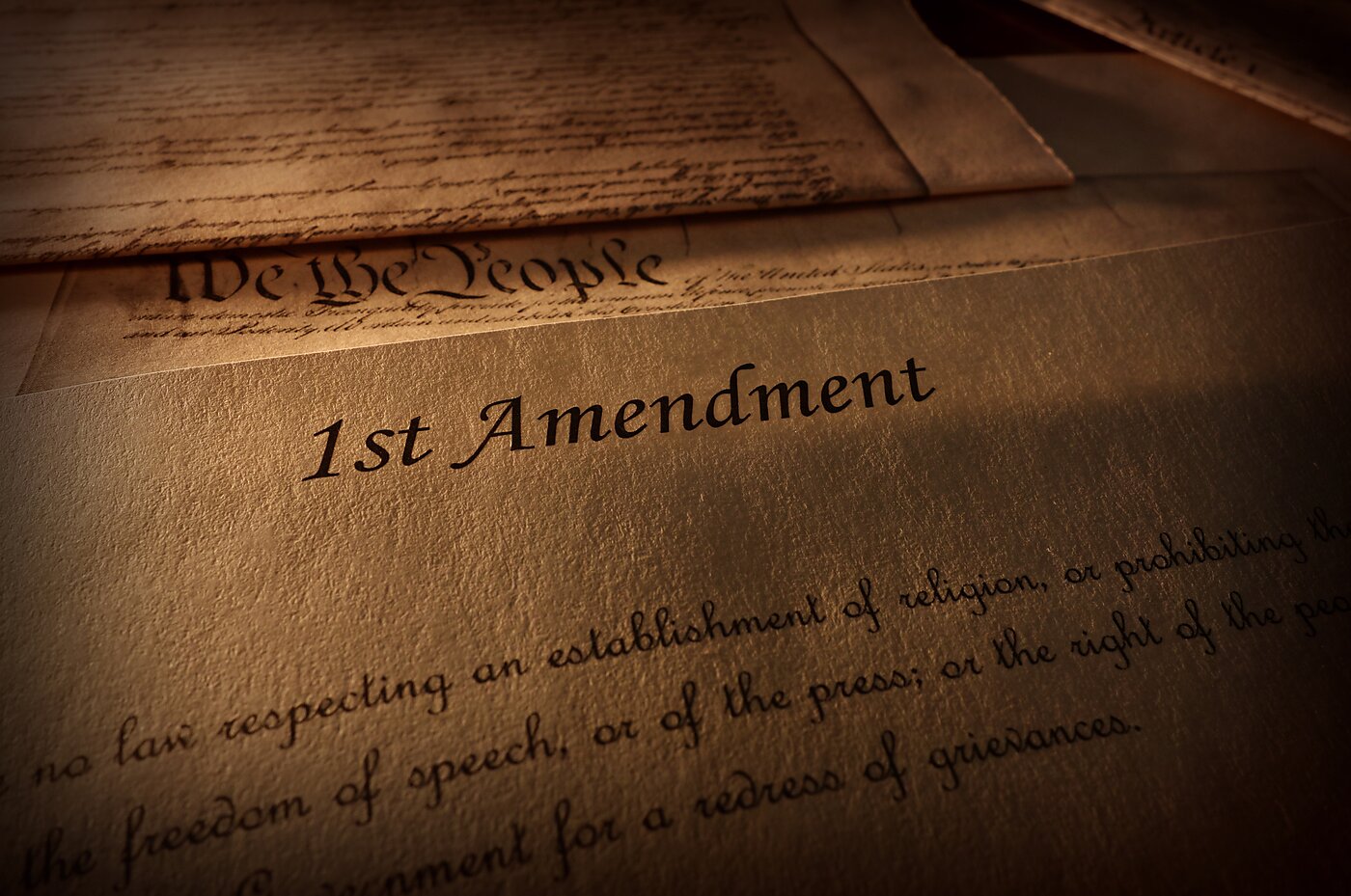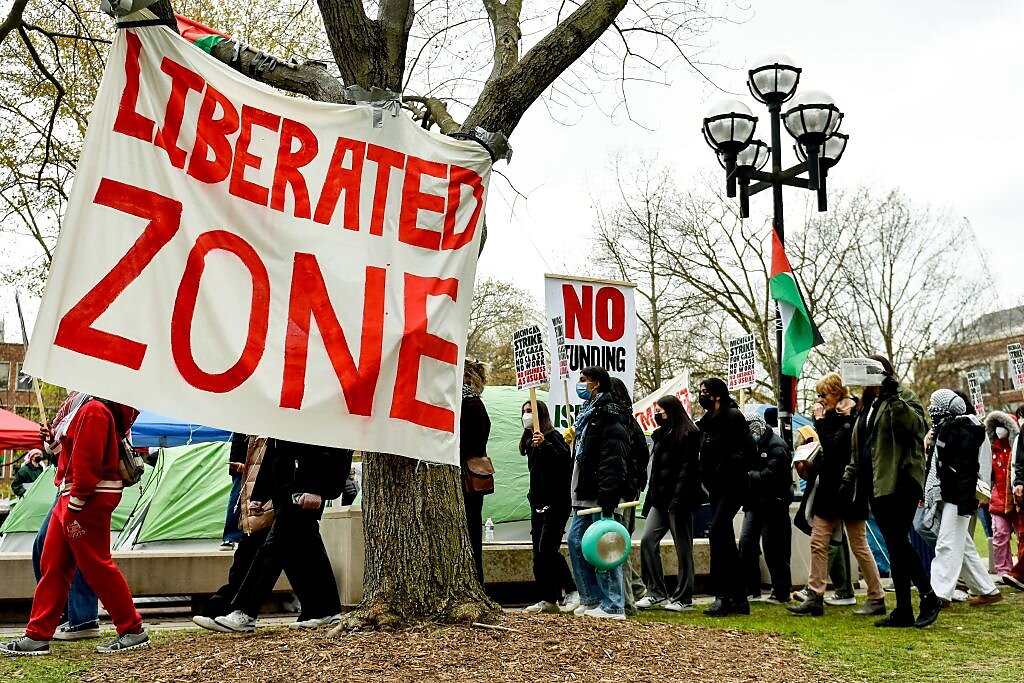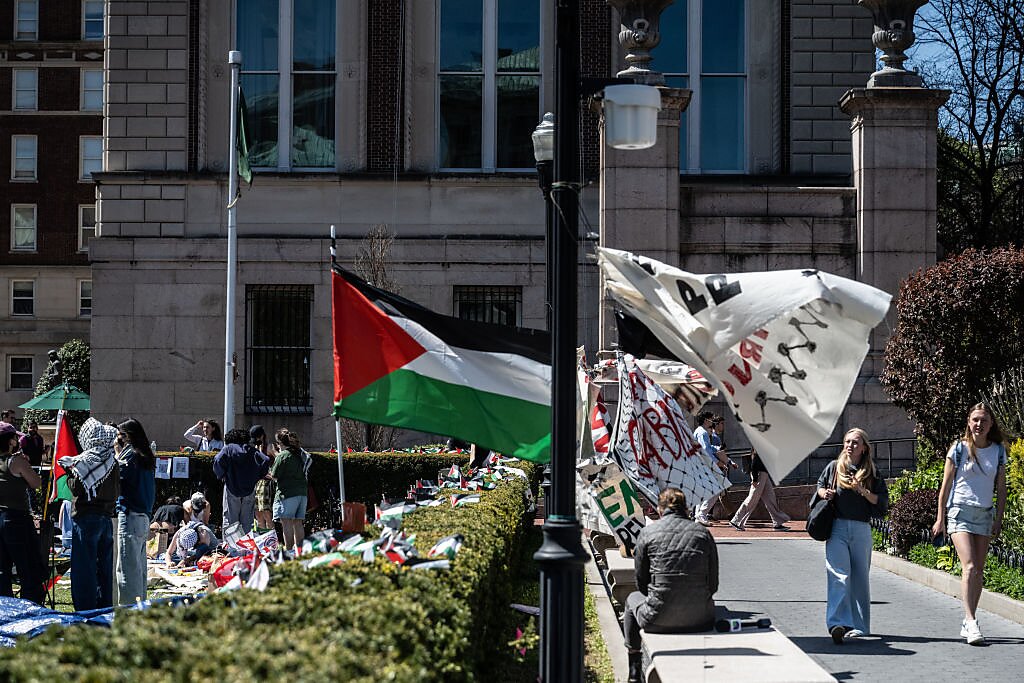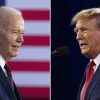The challenge for those persons charged with controlling campus unrest is to safeguard protesters’ right to free speech while ensuring that they don’t infringe on the equal rights of others. The difficulties are twofold: First, to identify and enforce legitimate limitations on protected speech; and second, to properly delineate those other rights that may not be violated.
We begin by examining the First Amendment. It directs that “Congress shall make no law … abridging the freedom of speech.” That text raises two threshold questions. First, it refers to “Congress,” thus suggesting that neither state governments nor private colleges are covered. The “state government” issue was resolved in 1868, when the 14th Amendment was ratified. It authorized federal intervention if a state were to abridge the privileges or immunities of citizens, deprive anyone of due process, or deny them equal protection. Essentially, the 14th Amendment applied nearly all provisions in the Bill of Rights to the states. No longer would states be exempt from the First Amendment’s assurances of free speech.
Private colleges, however, are not technically subject to the First Amendment, which restrains government actions, not the private sector. Still, most colleges have internal codes that guarantee academic freedom—often drawing on the First Amendment—and other rules that specify the rights enjoyed by students, faculty, and administrators. Moreover, many private colleges accept government funding, which may subject them to certain legal obligations equivalent to those that bind state actors.
The second difficult question raised by the text of the First Amendment is its command that “no law” may limit free speech. And yet, we proscribe falsely shouting fire in a crowded theatre, lying in commercial ads, campaign finance abuse, defamation, etc. So, the right to free speech is not absolute. It can be regulated—even though it’s constitutionally guaranteed. What then is the scope of permissible regulation?
Generally, prior restraints on speech are disfavored, but not totally barred. The more usual case is that speech not secured by the First Amendment can be punished after the fact. Those unsecured categories include incitement to riot, libel, fraud, perjury, compromising national security, some pornography, invasion of privacy, fighting words, threats of violence, and intellectual property infringement. Notably, among the categories of protected speech is so‐called hate speech, which encompasses sexism, racism, ageism, other offensive discriminatory language, and even some forms of expressive conduct.
Here’s the broad framework under the First Amendment: Restrictions on the time, place, and manner of speech are allowed as long as the restrictions don’t relate to the content of the speech and leave ample alternative channels of communication. Thus, valid regulations can limit the amount of noise, the location of a protest, and even its duration and form—for example, extended closure of a university building. The critical determinant is whether the rights of others in the campus community would be contravened.
By contrast, government restraints on speech content—e.g., it’s ok to discuss any subject except politics—are scrutinized more rigorously. To justify content‐based restrictions, regulators have to show they have a compelling governmental objective, the restrictions will be effective in accomplishing that objective, and less restrictive measures would not get the job done. Put somewhat differently, the regulation must successfully address a serious problem and extend no further than necessary to do so. Most regulations will not meet those stringent criteria.
Finally, there are viewpoint‐based restrictions—e.g., you can criticize the liberal position but not the conservative position, or vice versa. For obvious reasons, there’s little or no chance that such rules would survive First Amendment scrutiny. Our government must be a neutral arbiter. That means even‐handed enforcement in securing individual rights—including equal access to campus facilities and resources. In that regard, public universities are government entities, and most private universities are similarly bound because they either accept government funding or have quasi‐contractual responsibilities to their student‐customers and their employees.
Indeed, universities are generally well‐advised to go further than other government entities in maintaining neutrality. Many public servants will, as political players, endorse particular policies on behalf of their government employer. Such advocacy need not conflict with impartial law enforcement. Nonetheless, universities might prefer to practice institutional restraint. The 1967 Kalven principles, adopted by the University of Chicago and the University of North Carolina, put it this way: “[T]he instrument of dissent and criticism is the individual faculty member or the individual student. The university is the home and sponsor of critics; it is not itself the critic.”
Non‐partisan and objective implementation of campus rules means that even offensive ideas such as antisemitism must not be banned—unless, of course, the offensive speech is accompanied by harm‐inflicting conduct. Typically, students are not shielded from hurtful words, but they must be allowed to engage fully in campus events and activities. That’s the litmus test in defining and circumscribing the rights of all campus participants.
Recall that Title VI of the 1964 Civil Rights Act, as well as numerous state analogues, bars discrimination based on race, color, religion, sex, and national origin by public accommodations—that is, businesses (including educational institutions) that hold themselves out to the public. Accordingly, identity‐based attacks on Jewish or Palestinian students are forbidden if they rise to the level of physical (and arguably emotional) harassment under the relevant laws. (I’ve argued elsewhere that some provisions of public accommodations laws are constitutionally suspect; but the courts have held otherwise, and the laws are mostly well‐settled despite their questionable constitutional pedigree.)
Suppose, however, that a protest qualifies as civil disobedience—construed for our purposes as the public refusal to obey a lawful order with the goal of changing the law or policy. Plainly, such a protest goes beyond free speech, crosses into the realm of active conduct, and transgresses established law. Should it, nonetheless, be permitted? The answer, in my view, is yes—with two qualifications: First, for the protest to be “civil,” it must be peaceful and non‐violent. Second, the protesters must be willing to accept the consequences, which means no aggressive resistance if authorities execute a proper arrest. Under those circumstances, colleges can appropriately weigh First Amendment liberties against the freedom to teach, study, and learn in peace, even if not in harmony.
Colleges administrators are professionally, morally, and legally obligated to treat all members of the campus community equally. At the same time, they should afford ample opportunity for peaceful demonstrations—creating a safe harbor for vigorous discourse that allows for civil disobedience but sustains the rule of law. That final proviso is critical. It was nicely condensed in a recent letter, re‐published in the Wall Street Journal, from president Paul Alivisatos to the University of Chicago community: “[W]hen expression becomes disruption, we act decisively to protect the learning environment of students and the functioning of the University against genuinely disruptive protesters.”





















